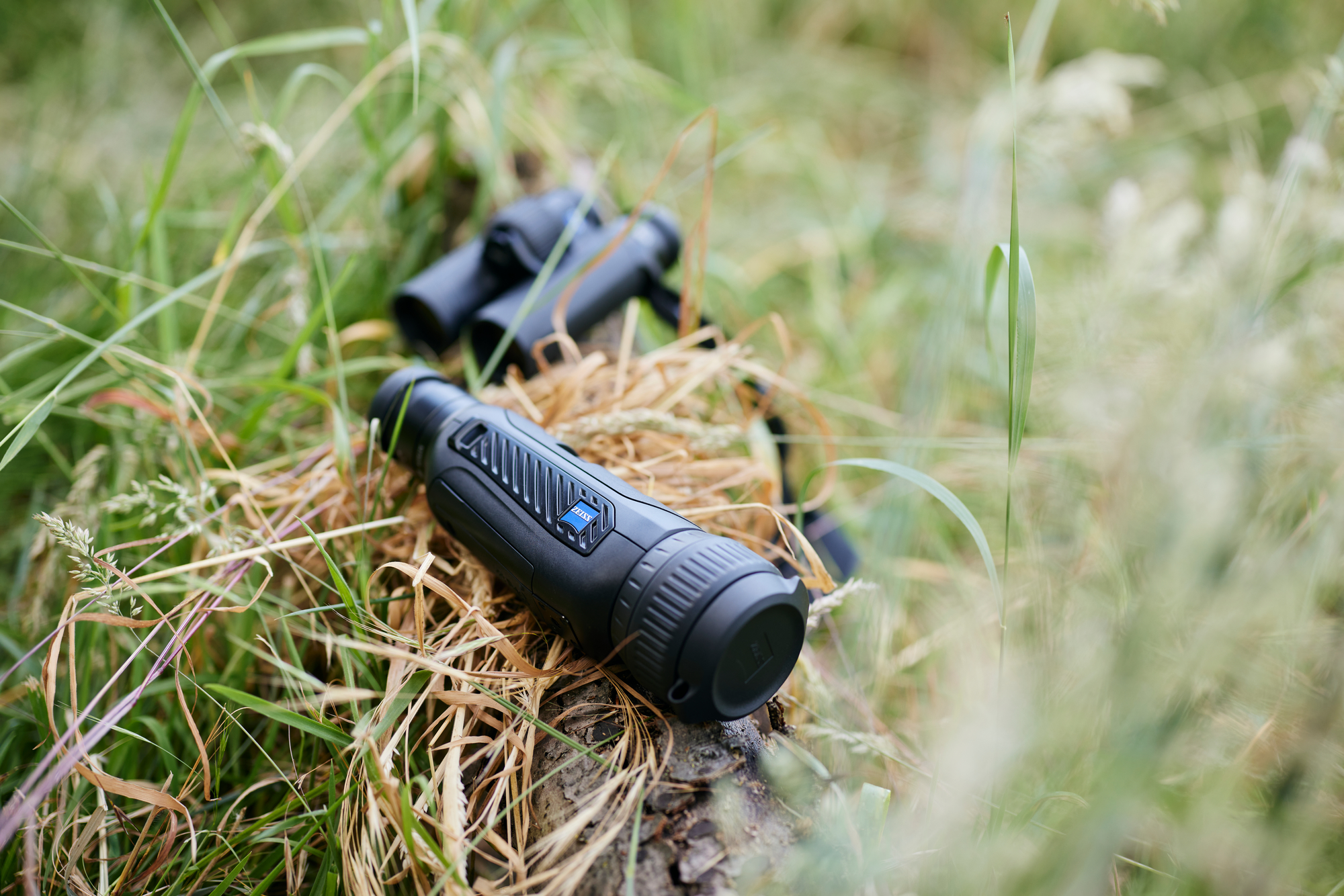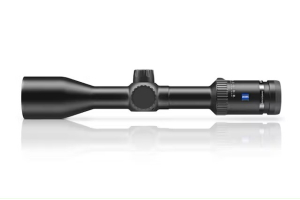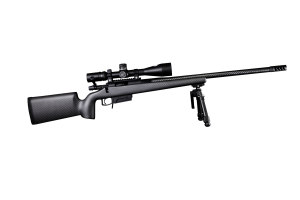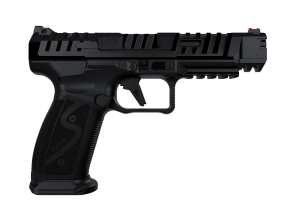
PRODUCT REVIEW - ZEISS DTI6 Thermal
Quality ZEISS monocular a high-flier says Mark Van Den Boogaart
A while back I was shooting the breeze over beers with some industry friends. Talk turned to what’s next and over the course of the evening the consensus was optical, ground-glass lenses would rule for the foreseeable future as they couldn’t yet produce the same performance electronically.
Consequently, manufacturers would make dumb glass smarter through incorporating technology, rather than replacing glass with electronic imagery. They certainly knew what they were talking about with rangefinding binoculars and smart phone-enabled scopes becoming the norm.
Another area they said to watch out for was ‘retail-isation’ of thermal technology. At the time thermals were still the domain of the military and professional shooters, however retail-based products were on the way. If you’ve been following the development of thermals, again you’ll know they were right on the money.
As always happens, retail technology brings new players to the market and brands we’ve never heard of start popping up. Think electric cars and Tesla and you catch my drift. Of course established brands try to adapt, though not always successfully as innovation isn’t necessarily a given.
Quality Zeiss monocular a high-flier, says Mark van den Boogaart Remember Nokia? Remember Kodak? So with that in mind I was keen to see how Zeiss and their latest offering, the DTI6 thermal monocular, interpreted thermal technology. Even though for most of us Zeiss is an optical company, the Zeiss Group is a whole lot more and has the history, the smarts and manufacturing grunt to make a very capable product.
On taking the DTI6 home for review it was obvious what I had in front of me was a very different thermal to what I’d thus far been used to so, because it was so different, I decided to break my review down into manageable chunks. What I came up with were four key points of interest: lens options, technical specifications, controls and battery power, yet before diving in I decided to give the DTI6 a quick once-over.
Straight out the box this monocular with its magnesium alloy body feels like a wellbuilt and solid unit designed for outdoor use. The control layout is ambidextrous and there’s even a carry-strap point on the left and right-hand side of the main body. The underside of the unit has an accessible battery compartment, forward of which is a tripod mounting point.
The front or objective lens is manually focused by rotating the lens barrel, while the three-position eye-piece lets you find your own preferred point of eye relief and can then be fine-tuned using the dioptre ring.
Pro tip: The best way to fine-tune it is to call up the menu in the view screen and rotate the dioptre ring until the text is in focus. The unit has four control points with three buttons: On/Off, Menu and Shutter which operate the on-board still and video camera. The fourth is zoom adjustment, a scrolling barrel design like the focus wheel on binoculars with zoom range being 1x to 10x in .1 increments. Visually the image is clear, the zoom responds quickly and the heat signature differentiation impressive even during the day.
There’s a USB C port towards the front left. Set-up and menu options are extensive and allow for lots of customisation and creation of profiles to suit different hunting and observation situations. Menu options are further enhanced once you link the DTI6 to your smart phone via a dedicated App and in doing so, like my son’s game console, you unlock new and exciting features including different colour palettes.
Lens options
Yes the Zeiss DTI6 has options and just like a DSLR camera you can change the I hadn’t encountered before and like the DTI6 itself was a real departure from the norm. There are two lenses available (20mm and 40mm) and the way Zeiss describe it the former is for close-range work, what Europeans describe as Woodlands, while the other gives you a long-range or Open Country option.
Specifications on the 20mm are a stated field of view of 38m at 100m and range of 1000m. The 40mm has a smaller field of view of 19m at 100m at 3x magnification and stated range of 2000m (you can buy the unit in either 20mm or 40mm confirmation or opt for both). The lenses as supplied appear very well-made, provided excellent levels of clarity, were easy to change out and come with an integrated protective lens cap Carrying in the Brisbane Valley I stuck with the 40mm, though if hunting heavy cover the 20mm would be a good option. Now be warned, when you switch lenses you expose all those internal smarts to the elements and it’s not a mud and dirtfriendly environment.
Specifications
With thermals there are generally two parts to the technology equation. First is the physical, the stated performance of sensor, display and lens. In simple terms the sensor is what gathers information (via the lens) while the display allows you to view it, the DTI6 combining a 640x480 12μm sensor with a 1024x768 HD AMOLED display. Part two of the thermal equation is the processing algorithm, essentially the brain which assesses information gathered by the sensor and lens to provide the final viewed image. For the DTI6 the brain is the Zeiss Smart Processing (ZSIP Pro) algorithm. In considering both the technical specifications of the sensor, quality of display and power of the ZSIP Pro, what you have is a top-shelf combination offering finely detailed and digitised
Controls
These are very well thought-out. Holding the unit with hands my size, your pinkie rests on the front On/Off button, middle finger sits comfortably on the Zoom scroll while your index finger rests on the Menu button and can move back to Shutter without losing balance. The menu as displayed via the viewing screen is uncluttered and easy to interpret and while the word ‘ergonomic’ is thrown around a lot, I’d say it’s a fair description for the DTI6 layout, a well-considered control panel suited to comfortably operating a monocular.
Power
I’m perhaps repeating myself but another feature I like is how Zeiss have approached battery power. They’ve gone back to basics and used an accessible, easily replaceable and external rechargeable. The battery itself is a sealed unit and, according to Zeiss, a single battery has a 6.5 hour runtime and easily lasted my afternoon and evening hunt. In making use of a simple and highly effective approach to power, Zeiss has reduced the concern of run-time as you’re only limited by the number of batteries you want to buy (and carry).
In the field
For performance testing I headed to the Brisbane Valley. My intention was to arrive in early afternoon, set up some trail cameras and spend the evening checking game movement from a good vantage point. In terms of optical performance the DTI6 certainly held its own and while maybe not best in class, it’s right up there. It demonstrated a high level of thermal detection which translated into clear, crisp images via the viewing screen. During the afternoon I experimented with the settings and each time the image slightly improved, which always inspires confidence.
The only issue I had was the lens protector. European manufacturers like Zeiss and Steiner often include integrated lens protectors on their optics, synthetic rubbers which mount around the lens via a ring. They’re a great idea and do protect the lens, though the synthetic rubber tends to hold a bit of memory and will slowly fold back and partially obscure your view. During the course of the afternoon I worked out a way to prevent this while keeping the protector in place, though if I owned the unit I might consider a different option.
So let’s put this in context. The Zeiss DTI6 is an outstanding thermal optic incorporating plenty of digital smarts along with good old-fashioned, high-quality European glass. Its price point is considerable however and when you consider the ability to upgrade by buying additional lenses and spare batteries, that spend will keep rising.
Which brings me to my final point. If you’re looking to jump right into thermals and willing to ‘buy once, cry once’ the Zeiss DTI6 might be just the one for you. Alternately, if you’ve been using thermals for a while and have learned enough to know what works and what doesn’t, this might be an upgrade worth considering. Ultimately if you’re in the market for a device with ‘built-to-last’ quality, exceptional battery life and switchable lenses, the DTI6 is a serious contender.
Published by SSAA
June 2024 Australian Shooter, written by Mark Van Den Boogaart





